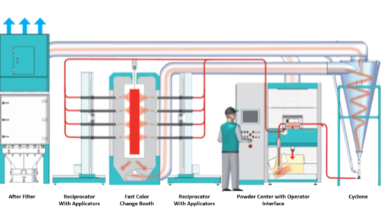A Comprehensive Guide to Workers’ Compensation

Workers’ Compensation is a pivotal system in the landscape of employment, providing crucial benefits to employees who suffer work-related injuries or illnesses. This guide aims to offer a detailed understanding of Workers’ Compensation, ensuring that both employers and employees are well-informed about the intricacies of this essential insurance system.
What is Workers’ Compensation?
Workers’ Compensation is a form of insurance that offers wage replacement and medical benefits to employees injured in the course of employment. This setup is designed to eliminate the need for litigation by ensuring that employees receive financial compensation and medical care, while employers are protected from costly lawsuits.
Key Features of Workers’ Compensation
- No-Fault System:
- Workers’ compensation operates on a no-fault basis, which means that benefits are provided regardless of who is at fault for the injury. This simplifies the process and reduces the need for potentially lengthy and adversarial litigation.
- Benefits Provided:
- Medical Care: Covers all medical expenses related to the work injury or illness, including hospital visits, medications, and rehabilitation costs.
- Disability Pay: If an employee is unable to work because of a work-related injury, they are eligible for a portion of their regular wages, typically calculated based on their average earnings.
- Coverage:
- Virtually all employees are covered under Workers’ Compensation insurance from the first day of employment. This includes part-time, full-time, and, in some cases, temporary and seasonal workers.
- Legal Protection:
- Workers’ Compensation laws provide a form of legal shield for employers, protecting them from most lawsuits involving workplace injuries.
How Does Workers’ Compensation Work?
- Incident Reporting:
- An injured worker must report the injury to their employer as soon as possible. The time limit for reporting can vary by state, but it is generally within a few days of the incident.
- Claim Filing:
- The employer then files a claim with their workers’ compensation insurance carrier. Details of the injury, along with any initial medical reports, are included in this claim.
- Medical Examination:
- The employee may be required to undergo a medical examination by a doctor affiliated with the workers’ compensation insurer to confirm the extent of the injuries and the recommended treatment.
- Benefit Disbursement:
- Once the claim is approved, the insurer begins disbursing benefits to cover medical costs and lost wages. The exact nature and duration of these benefits can vary depending on the severity of the injury and state laws.
Challenges and Considerations
- Dispute Resolution:
- Disputes over workers’ compensation claims can arise, particularly concerning the severity of an injury or the amount of benefits owed. Many states provide a mediation process to resolve such disputes.
- Fraud Prevention:
- Workers’ compensation systems are susceptible to fraud, including false claims of injury and exaggerated reports of disability. Employers and insurers vigilantly monitor for signs of fraud to protect against unjustified claims.
- Continuous Updates:
- The laws governing workers’ compensation are subject to change. Both employers and employees must stay informed about the latest legal requirements and procedural changes in their state.
Conclusion
Workers’ Compensation is an essential safety net that supports employees during difficult times caused by workplace injuries. By understanding and effectively managing workers’ compensation claims, both employers and employees can ensure that the process runs smoothly and that injured workers receive the support they need to recover and return to work. This guide serves as a foundational resource for navigating the complex landscape of workers’ compensation.



